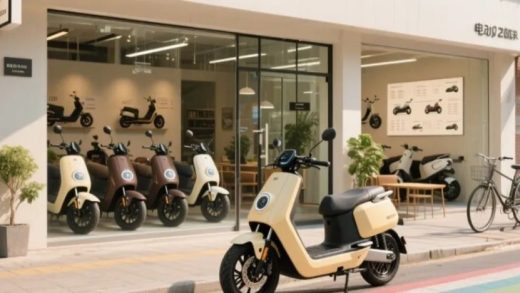1. Industry Risk Analysis
(1) Policy Risk
Currently, the diesel generator industry faces the risk of periodic policy tightening: The environmental protection policy is in the stage of intensified implementation. The continuous upgrading of exhaust emission standards forces a sharp increase in the cost of technological transformation. Some cities have restricted the use of diesel generator sets in core urban areas. The energy transformation policy has entered the evaluation and adjustment period. The trend of clean energy substitution squeezes the market space of traditional generator sets. Local governments may dynamically adjust the subsidy rules for fuel generator sets and the issuance rules of approvals. The import and export restriction policies caused by international trade frictions have potential fluctuations. The stability of the supply chain of key components is greatly affected by tariff policies. Enterprises need to respond to sudden increases in compliance costs at any time.
(2) Economic Risk
The weak global economic recovery has led to a slowdown in the growth rate of industrial investment. The weak demand in infrastructure and manufacturing directly affects the sales volume of diesel generators. At the same time, the accelerated energy transformation has prompted the photovoltaic + energy storage solution to squeeze the traditional market space. The high – level fluctuation of commodity prices and supply chain disruptions have pushed up the cost of raw materials such as steel and copper, and the product gross profit has continued to narrow. In some regions, the power infrastructure has become saturated, and the currency depreciation in emerging markets has weakened the import capacity. Under the double pressure, the inventory turnover rate has decreased significantly. In the period of rising interest rates, the enterprise financing cost has increased. The lengthening of the accounts receivable cycle has intensified the cash – flow pressure, resulting in a financial dilemma of “increasing revenue but not increasing profit”.
(3) Social Risk
The enhanced environmental awareness of the younger generation and the policy orientation have formed double pressure. The diesel generator industry faces the risk of a break in inter – generational values. The traditional main consumer groups (manufacturing and construction industry practitioners) pay more attention to the stability and economy of equipment, but decision – makers of Generation Z tend to choose low – carbon solutions, resulting in a structural differentiation of market demand. The media pressure from environmental protection organizations and the NIMBY effect in communities have increased the resistance to the implementation of diesel engine projects. The trend of brand stigmatization has weakened customer trust. Entrepreneurs find it difficult to persuade traditional users to accept the premium for the transformation to new energy technologies, and are also trapped by the value negation of “transitional products” by the young consumer group. The market shrinkage risk caused by the inter – generational consumption gap has emerged.
(4) Legal Risk
The stricter environmental protection emission standards have greatly increased the investment pressure on exhaust treatment facilities. The differences between the National VI standard and the EU Stage V certification lead to high compliance costs for exports. The dynamic verification of safety production licenses and the requirements of the occupational health management system increase operational risks. The lack of mandatory energy – efficiency label certification will lead to product sales bans. Property rights defects in the renovation and trading of second – hand equipment are likely to cause litigation disputes. The EU carbon tariff and the REACH regulation pose new challenges to supply chain traceability, and there are risks of green trade barriers in overseas market expansion.
2. Entrepreneurship Guide
(1) Suggestions on Entrepreneurship Opportunities
Currently, entrepreneurship opportunities in the diesel generator industry are concentrated in the fields of intelligent transformation, clean energy adaptation, and scenario – based solutions: Develop intelligent generator sets equipped with remote monitoring and predictive maintenance systems to meet the real – time management needs for stable power supply in scenarios such as data centers and hospitals. Research and develop low – emission generator sets for the hydrogen energy industry, suitable for distributed energy supply in hydrogen fuel storage and transportation scenarios. Focus on power – deficient markets in Southeast Asia, Africa, etc., and launch container – type modular power generation systems that can be quickly deployed. Build micro – grids in combination with photovoltaic/energy storage equipment. Customize waste heat recovery power generation systems for high – energy – consuming enterprises to achieve energy cascade utilization through energy – saving transformation.
(2) Suggestions on Entrepreneurship Resources
Entrepreneurs should first establish a stable supply chain resource. Focus on locking in domestic alternative suppliers for core components of diesel engines (such as crankshafts and cylinder blocks), and form strategic partnerships with regional power engineering companies to obtain order resources. Make full use of the equipment sharing policy in industrial parks and the bonded warehouse services in export processing zones to reduce heavy – asset investment. Access the power grid demand – side response platform to obtain real – time load data and optimize inventory. Focus on integrating the local service resources of overseas projects under the Belt and Road Initiative. Jointly establish 24 – hour emergency repair outlets with overseas chambers of commerce. At the same time, apply for the policy fund subsidy of the “Specialized, Sophisticated, Distinctive and Innovative” program from the Ministry of Industry and Information Technology, and allocate 60% of the entrepreneurship funds to the acquisition of patented technologies for variable – frequency control modules.
(3) Suggestions on Entrepreneurship Teams
In the formation of an entrepreneurship team in the diesel generator industry, the founder should first recruit power machinery engineers with industry experience, marketing experts familiar with industrial product sales channels, and operation backbones with supply – chain management capabilities to form a triangular collaborative structure of technology R & D, production management, and market development. The core members should cover key links such as product energy – efficiency optimization, cost control, and the establishment of after – sales service systems. At the same time, at least one compliance officer familiar with environmental protection emission regulations should be added to cope with the global emission reduction policy pressure. Bind partners with regional industrial customer resources through equity incentives, and establish a 24 – hour technical service team to respond quickly to sudden power demands, ensuring that the team has the ability to operate flexibly in the heavy – asset, strong – cycle industry.
(4) Suggestions on Entrepreneurship Risks
Entrepreneurs in the diesel generator industry should first establish a diversified supply chain system. Reduce the risk of raw material supply interruption through an alternative supplier database, and focus on the opportunities for domestic substitution of core components. Strictly monitor the dynamics of environmental protection policies in various regions, reserve power solutions that meet the National IV emission standards in advance, and simultaneously layout solar hybrid generator sets to cope with the trend of new energy substitution. Adopt the order – based production mode combined with the advance payment mode to relieve the capital pressure. Focus on developing customers in scenarios with rigid demand such as hospitals and data centers. At the same time, set up a dynamic inventory early – warning mechanism for volatile markets such as construction sites. Establish a 24 – hour emergency service network. Reduce the operation and maintenance cost through the remote diagnosis + regional parts warehouse model. Provide annual maintenance packages for key customers to enhance user stickiness.





